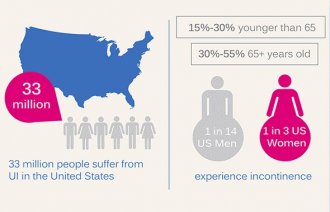Shedding Light on Incontinence Issues in Women
- Category: Blog
- Posted On:
- Written By: PVHMC - Admin

For women with incontinence issues, even the most common everyday tasks can generate fear and anxiety. Imagine driving to work, interacting with co-workers, or going to the grocery store with the fear of “an accident” looming over you. Suddenly the first thought in your mind isn’t your to-do list, but the closest route to the bathroom. The condition can quickly erode quality of life and chip away at self-confidence.
An estimated 25 to 45 percent of women suffer from incontinence, which results in sudden urges to go to the bathroom or frequent leaking without warning. Yet in spite of its prevalence, many women keep quiet about the issue due to embarrassment and put their lives on hold, refraining from going out in public, catching up on errands, attending social events, or being intimate in relationships because of the fear and shame.
There is good news for those suffering in silence, though: the issue can often be resolved with just a few trips to a qualified physical therapist.
Most cases of incontinence are caused by weakened pelvic floor muscles, which can result from multiple births, difficult labor, or weight gain. Physical therapy has proven to help women recover strength in those muscles to help combat leaking.
“Many women believe that urinary incontinence is just a normal part of aging, but that’s definitely not the case,” said Erica Brown, MPT, a physical therapist specializing in urinary incontinence management at Pomona Valley Hospital Medical Center (PVHMC). “We have many resources available to help women overcome this condition.”
Brown teaches her patients how to do Kegels and other muscle movements that target the lower pelvic region, and she guides them through bladder retraining, biofeedback, and electrical stimulation to achieve results.
A number of studies have touted the effectiveness of muscle conditioning for improving incontinence, including research published in the journal Physical Therapy that concluded women who practiced pelvic-floor exercises had 68 percent fewer episodes of incontinence per week.
Perhaps best of all, patients who learn the exercises over the course of several PT appointments can do them discreetly at home or at work for long term outcomes.
The sooner incontinence is detected, the easier it will be to combat, Brown said, and women who have recently given birth or are noticing any re-occurrences with incontinence problems should start by scheduling an appointment with their primary care physician to get a referral.
“Even if therapy doesn’t completely solve incontinence, it will absolutely improve your quality of life,” Brown said.
For more information on PVHMC’s Rehabilitation Services department and a list of physicians, please visit www.pvhmc.org/#Incontinence or contact (909) 865-9782.

.png)

.png)